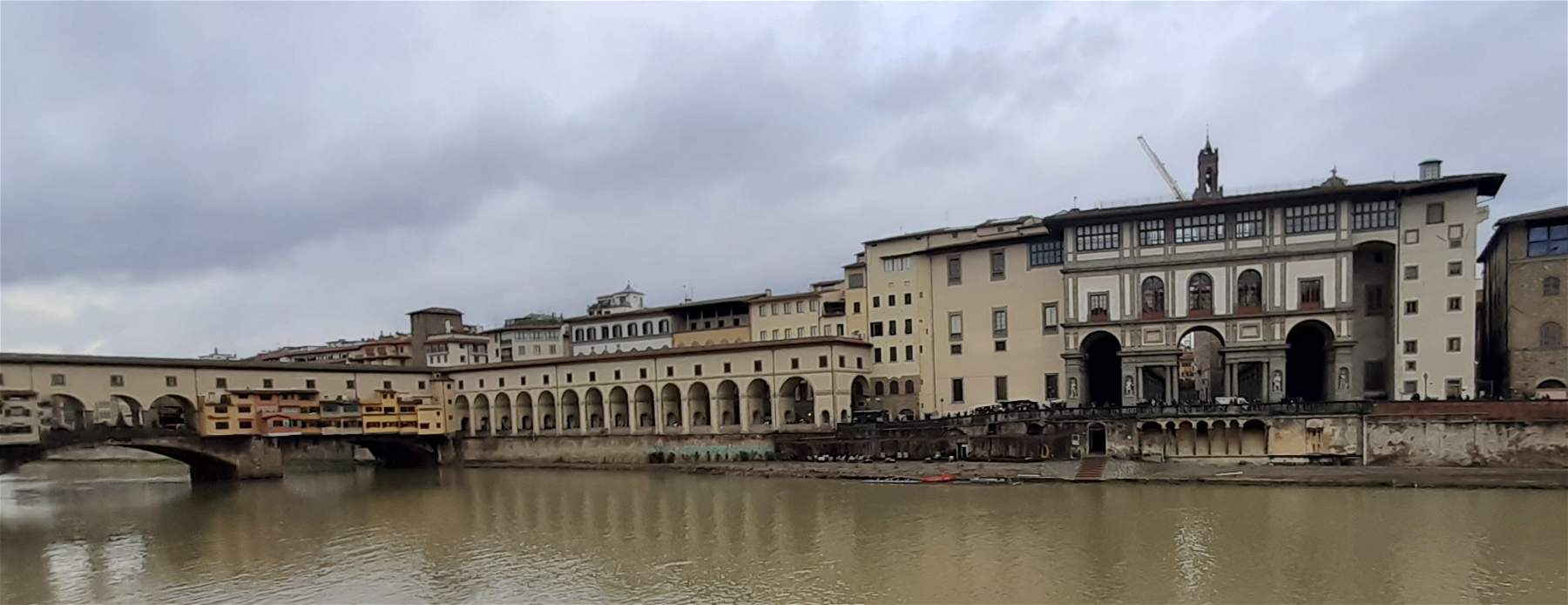In Florence, green light from May 9 for the restoration of the Vasariana Terrace, the celebrated overlook on the Lungarno Anna Maria Luisa de’ Medici with the Uffizi square behind and Ponte Vecchio in front on one side, and hills, San Miniato and Piazzale Michelangelo on the other. The Terrace is a favorite destination for tourists visiting Florence, but exposure to the elements has caused its gradual deterioration, and for the Terrazza Vasariana the time has come for complete restoration. The work is expected to cost 300,000 euros. The Terrace suffers from exposure to rain, cold and sun. The restoration operations include both the recovery of the stone elements that make up the balustrade, the cornices, the brackets that support the vaults, the plasterwork, and finally the structural consolidation of the upper part as well.
The intervention action will also include the removal of pest vegetation and the carrying out of cleaning operations by hand and with chemical compresses. Where necessary there will also be grouting and sealing, as well as consolidation of the masonry. To operate the structural consolidation, it is necessary to remove the stone sidewalk of the terrace and the small sidewalk up to the roadway and to consolidate the subgrade and screed. When the work is done, the original slab will be put back in place. The windows under the vaults will be fitted with new anti-volatile nets.
“From this Terrace,” recalls Mayor Dario Nardella, “we can enjoy one of the most striking views of Ponte Vecchio and the Florentine Oltrarno. Thanks to this work we will also restore to their original splendor the balustrades, the handrails, the stone elements but also the whole part below, invisible to most people. In this way we do not stop enhancing, caring for and recovering our artistic and cultural heritage.”
In order to proceed with the work, it will be necessary to close the Anna Maria Luisa de’ Medici riverfront and the Archibusieri riverfront (from Via dei Georgofili) to traffic. Also planned is the change of direction on via Lambertesca (from via dei Georgofili to piazzale degli Uffizi) necessary to establish the alternative route (only for authorized vehicles of less than 35 quintals and less than 2.40 meters wide and 3 meters high) consisting of via dei Georgofili-via Lambertesca-piazzale degli Uffizi-via della Ninna-piazza del Grano-via dei Castellani-piazza dei Giudici.
On the occasion of this closure of the riverfront, some punctual pavement restoration works have been scheduled. The measures will be in effect for the first phase of the work, that is, until July 8. For the second phase, however, no traffic measures will be necessary.
As early as the decade of 1540-1550, Duke Cosimo I de’ Medici had conceived the idea of bringing together the city’s major corporations and administrative and executive functions in the area of the Piazza Ducale. In 1546 he had had the road from the Ducal Palace to the Arno opened, with the intention of constructing a building to house thirteen of the major Magistracies of the Medici State. But it was not until Giorgio Vasari ’s arrival in Florence that the idea became a reality: in just four months, in 1560, the model was ready, and under his direction work on the Uffizi began.
In 1574 upon the deaths of Cosimo and Vasari, which occurred within a few months of each other, the former the building was largely completed, though not definitively. The Uffizi square squeezed between the buildings is configured at the same time as a courtyard-square, but also as a path. Interesting in the qualification as an ’interior’ of the Uffizi space is the use of pietra serena, usually used in interior courtyards, instead of pietra forte. As early as the end of the 15th century, due to the influence of Brunelleschi’s architecture, the use of pietra serena was widespread, which compared to pietra forte requires greater protection from the elements. In the Uffizi factory, Vasari solves this problem by creating an eave with overhangs of more than two meters, which is an essential element of the architecture of the complex. In addition, the fabbrica is an interesting experience in building technique; in fact, the use of metal reinforcement of the stone and other devices in the wall apparatus make it possible to achieve structural continuity. Vasari was aware of the importance of these technical solutions and reserved the introductory chapter of the Lives for their description.
 |
| Florence, restoration of the Vasariana Terrace begins |
Warning: the translation into English of the original Italian article was created using automatic tools. We undertake to review all articles, but we do not guarantee the total absence of inaccuracies in the translation due to the program. You can find the original by clicking on the ITA button. If you find any mistake,please contact us.